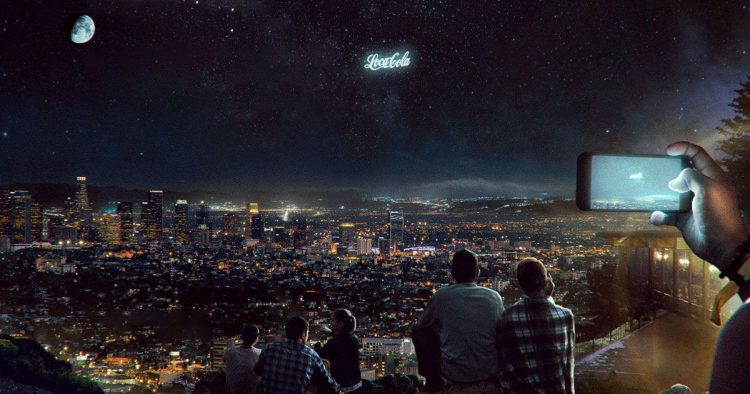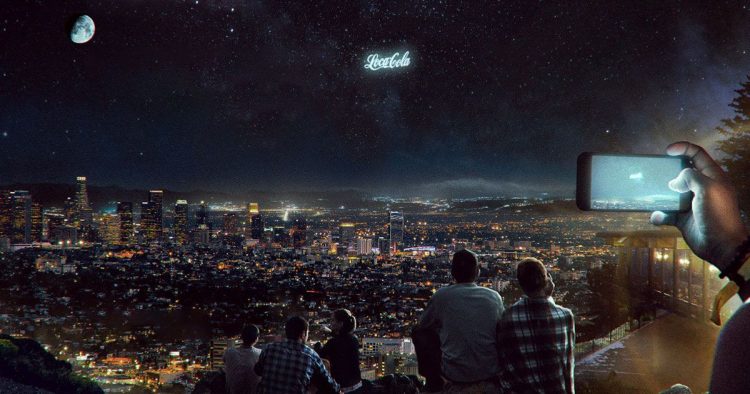Imagine looking up to gaze at the moon on a clear summer night only to see the sky full of glowing advertising billboards. That’s the future envisioned by a Russian start-up which plans to launch billboard advertisements into low-Earth orbit as early as 2021.
Russian company StartRocket announced plans to introduce orbital advertising billboards made up of a grid of tissue box-sized satellites called CubeSats. These tiny satellites will orbit 400-500 kilometers above the Earth and use reflective Mylar sails around 30 feet in diameter to catch and reflect sunlight, creating a pixelated matrix. The ads would only be visible at night but could be seen from just about anywhere on the planet. The company already has a CubeSat prototype, and could start testing its sky advertisements next year.

Photo: StartRocket
“We are ruled by brands and events,” StartRocket project leader Vlad Sitnikov told Futurism. “The Super Bowl, Coca Cola, Brexit, the Olympics, Mercedes, FIFA, Supreme and the Mexican wall. The economy is the blood system of society. Entertainment and advertising are at its heart. We will live in space,and humankind will start delivering its culture to space. The more professional and experienced pioneers will make it better for everyone.”
However, not everyone agrees that having enormous billboard-style advertisements in the night sky will be good for everyone. Experts have argued that the bright ad banners could interfere with the ability to study the skies, or that the grid of satellites will eventually become space junk and potentially interfere with more significant space activity or aviation safety.
“Putting more satellites up there is going to cause more opportunities for collisions, and we don’t want that happening,” John Crassidis, a professor of mechanical and aerospace engineering at the University at Buffalo, told NBC News. “My biggest issue is that these objects are going to become space junk. It’s not serving any good purpose outside of advertising, I’m not a big fan of this at all.”

Photo: StartRocket
“It’s a threat to the ability to do astronomical research from the ground,” Astronomer John Barentine told Astronomy.com. It’s a threat to the ability to do astronomical research from the ground, every one of those moving blips of light in the night sky is something that can interfere with our ability to collect photons from astronomical sources.”
Sitnikov doesn’t seem to bothered about the criticism his company’s project has received from the scientific community, though. He claims space advertising is inevitable, and compared the reactions “Orbital Display” has been getting to people’s reactions to TV ads at the advent of television.
“If you ask about advertising and entertainment in general — haters gonna hate,” Skorupsky said. “We are developing a new medium. At the advent of television no one loved ads at all. What if we will invent a new media, the first media in orbit?”
Although, technically feasible, the Orbital Display project is likely to face some regulatory hurdles. Still, I wouldn’t be surprised if instead of stars, we’ll be looking at ads from the world’s biggest brands when looking at the night sky in the not so distant future.













